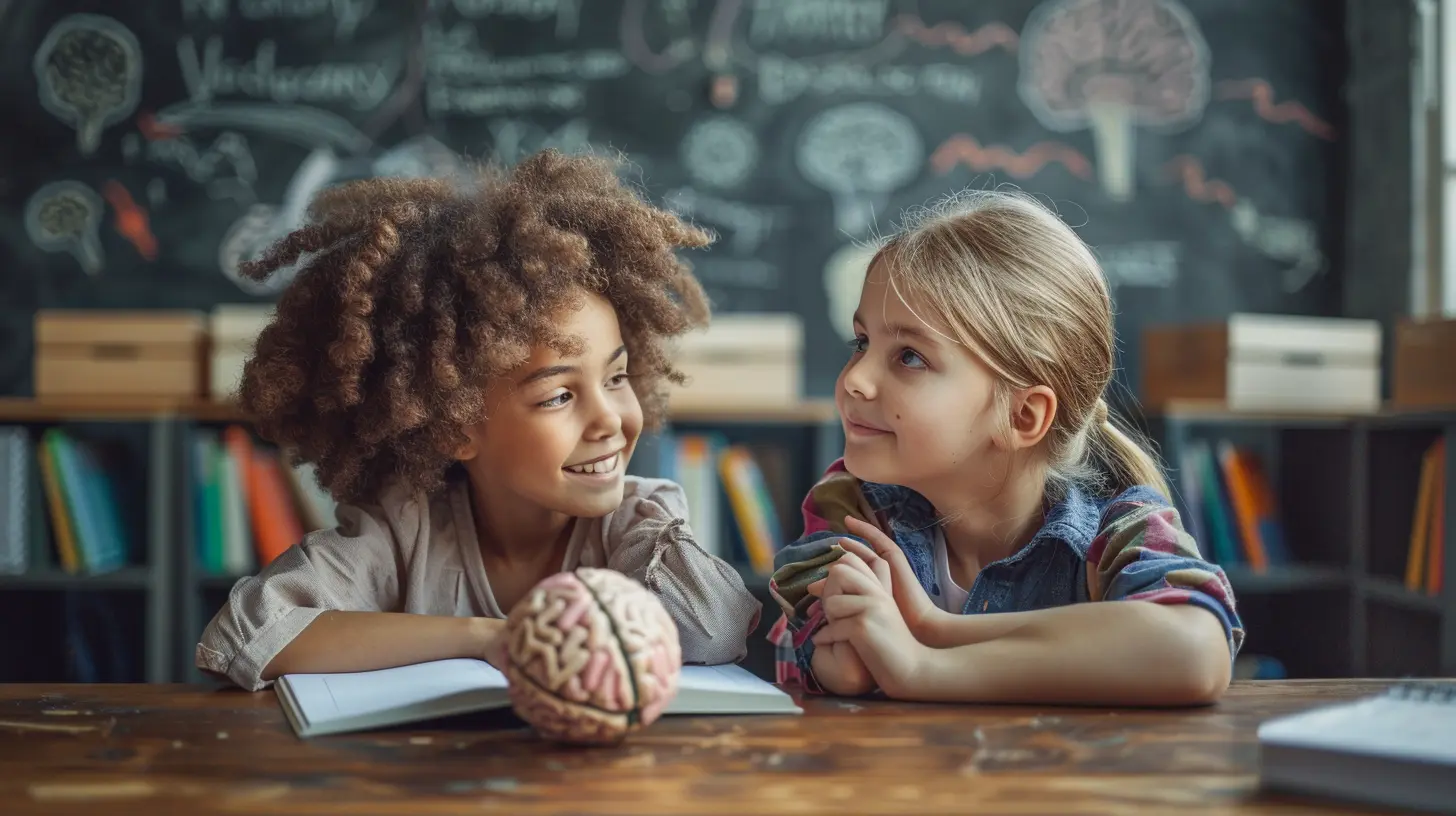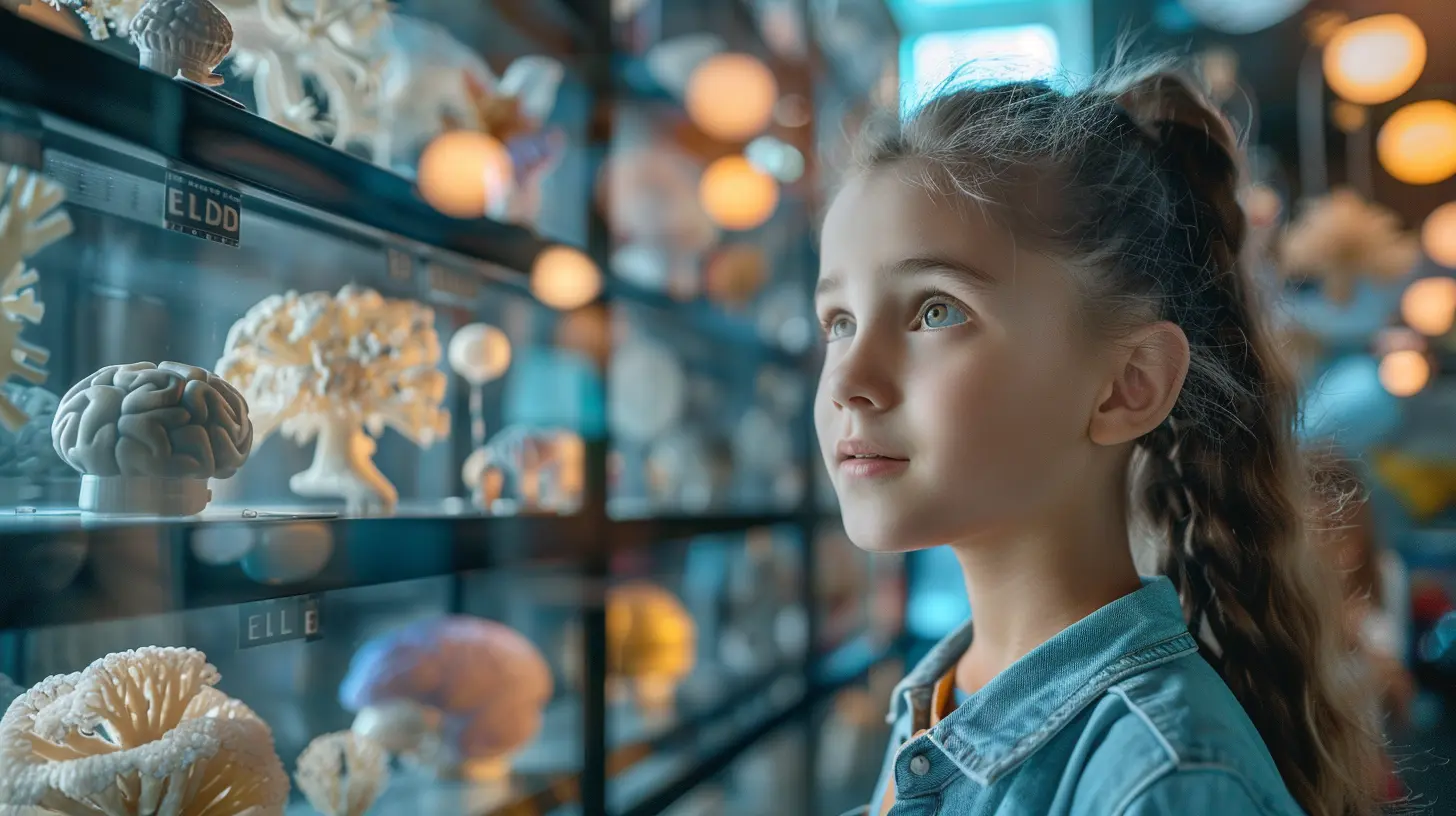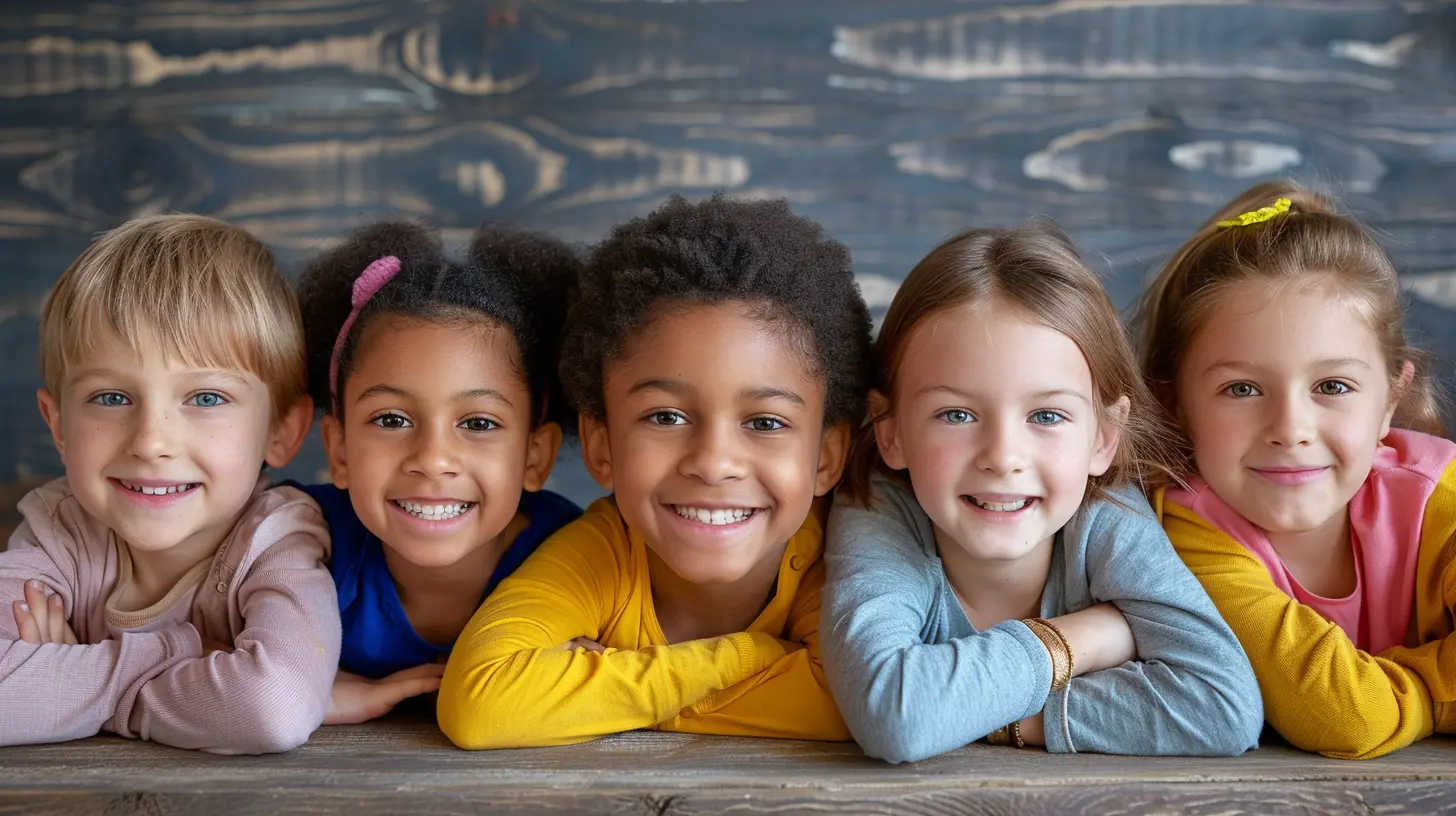The Science Behind Social-Emotional Learning and Brain Development
13 December 2024
When you hear the term "social-emotional learning" (SEL), what comes to mind? You might think it's just about teaching kids to be nice to each other or helping them manage their emotions. But did you know that SEL goes way beyond that? It has a direct impact on the brain and how it develops. Yep, we're talking actual changes in brain structure and function!
In this article, we'll dive deep into the science behind social-emotional learning and brain development. We'll explore the fascinating ways SEL influences our brain, how it can shape our emotional intelligence, and why it's becoming such a critical part of education today. So, buckle up! We're about to go on a journey through the mind and what makes us tick.

What is Social-Emotional Learning (SEL)?
Before we get into all that brainy stuff, let's break down what social-emotional learning actually is. In simple terms, SEL is the process through which people—both children and adults—acquire emotional intelligence. This includes understanding and managing their emotions, setting positive goals, showing empathy for others, establishing relationships, and making responsible decisions.Think about it like building a toolkit for life. SEL equips you with the tools to navigate through challenges, both big and small. Whether you're learning how to calm down when you're angry or figuring out how to work well in a group, SEL is at the heart of it. And here's the kicker: It's not just about feelings; it's about brain development too.
Key Components of SEL
There are five core components of SEL, often referred to as the "CASEL 5," which were defined by The Collaborative for Academic, Social, and Emotional Learning (CASEL). These include:1. Self-awareness: Understanding your own emotions, strengths, and limitations.
2. Self-management: The ability to control your emotions and behaviors.
3. Social awareness: Understanding and empathizing with others.
4. Relationship skills: Building healthy relationships and working well with others.
5. Responsible decision-making: Making ethical, constructive choices.
Each of these components is like a piece of a puzzle, and when they come together, they create a well-rounded, emotionally intelligent individual. But what’s happening in the brain during all this? Let’s dive into that next.

How SEL Impacts Brain Development
So, what’s going on inside our heads when we practice SEL? The brain, as it turns out, is like a muscle. Just like lifting weights builds your biceps, practicing SEL strengthens specific areas of the brain that are responsible for emotional regulation, decision-making, and social interactions. Let’s explore the science behind it.The Prefrontal Cortex: The Brain's CEO
The prefrontal cortex is the part of your brain responsible for higher-order thinking—things like decision-making, planning, and controlling impulses. You can think of it as the CEO of your brain. When students practice self-management (like not lashing out when someone cuts them in line), they’re giving this part of their brain a workout.Over time, the prefrontal cortex becomes more efficient at handling complex emotional and social situations. Studies have shown that people who regularly practice SEL have more activity in this area of the brain, which helps them make better choices and stay cool under pressure.
The Amygdala: The Brain's Alarm System
Next up is the amygdala, which is like your brain’s internal alarm system. It’s the part of the brain that responds to fear and stress. Imagine you’re about to give a big presentation in front of a room full of people. That feeling of your heart racing and palms sweating? That’s your amygdala kicking into high gear.Now, what does SEL have to do with this? When we engage in social-emotional learning, we actually help regulate the amygdala's responses. For instance, mindfulness practices, which are often part of SEL programs, teach individuals how to calm their body and mind, reducing the fight-or-flight response. Over time, the more you practice, the more your brain learns to handle stress in a healthy way.
The Hippocampus: Memory Storage
The hippocampus is like the brain’s filing cabinet. It’s responsible for storing memories, including emotional experiences. If you're learning how to manage emotions or build relationships, the hippocampus plays a critical role in retaining those lessons.What’s fascinating is that when we experience positive emotional interactions, the hippocampus is more likely to remember them. This means that the more positive, emotionally healthy experiences we engage in, the better our brain gets at storing and recalling those moments in future situations.
Neuroplasticity: The Brain’s Ability to Change
One of the most exciting aspects of brain development is neuroplasticity, which is the brain’s ability to change and reorganize itself. This means that practicing SEL can literally rewire your brain. By consistently engaging in activities that promote emotional intelligence, the brain creates new neural pathways that make it easier to manage emotions, handle stress, and build relationships.This is especially important in children, whose brains are still developing. The earlier they start practicing SEL, the more time they have to build these neural networks, which can benefit them for the rest of their lives.

The Benefits of SEL for Brain Development
Alright, now that we’ve covered how SEL affects the brain, let’s talk about the tangible benefits. Why should we care about all this brain stuff? How does it actually help in real life?Improved Emotional Regulation
One of the most immediate benefits of SEL is improved emotional regulation. When your brain is better equipped to handle stress and process emotions, you're less likely to have outbursts or feel overwhelmed. Imagine being able to stay calm during a heated argument or not letting anxiety take over before an important event. This is all thanks to the brain's ability to regulate emotions through SEL practices.Better Academic Performance
Believe it or not, SEL doesn’t just make you emotionally smart—it can also make you academically smarter. Studies have shown that students who engage in SEL programs tend to perform better in school. Why? It’s simple: When you’re less stressed and more in control of your emotions, you’re able to focus better and retain information more effectively.Enhanced Social Skills
Remember those relationship skills we talked about earlier? SEL helps strengthen the brain’s social circuits, making it easier to build and maintain healthy relationships. This is especially important in today’s world, where collaboration and teamwork are critical for success.By developing empathy and understanding through SEL, individuals are better equipped to navigate social situations, resolve conflicts, and form meaningful connections with others.
Long-term Mental Health Benefits
Last but certainly not least, SEL has profound long-term benefits for mental health. By building strong emotional foundations early on, individuals are better equipped to cope with life’s challenges as they grow older. This can reduce the likelihood of mental health issues like anxiety and depression later in life.In fact, research has shown that individuals who participate in SEL programs are less likely to experience chronic stress or engage in risky behaviors. By promoting emotional resilience, SEL sets the stage for healthy, happy lives.

How to Incorporate SEL in Education
Now that we’ve established how important SEL is for brain development, the next question is: how do we incorporate it into education? Luckily, more schools are starting to recognize the value of SEL and are integrating it into their curricula.Mindfulness Practices
One popular method is through mindfulness practices, which help students become more aware of their thoughts and feelings. This can be as simple as starting the day with a few minutes of deep breathing or practicing gratitude at the end of a lesson.Collaborative Learning
Group projects and collaborative learning activities also promote SEL by encouraging students to work together, communicate effectively, and resolve conflicts in real-time. These interactions help strengthen the brain’s social circuits and improve relationship skills.Emotional Check-ins
Another great strategy is emotional check-ins. Teachers can ask students how they’re feeling at the beginning of the day, giving them the space to express their emotions and learn how to manage them. This not only promotes self-awareness but also strengthens the prefrontal cortex’s ability to regulate emotions.Role-Playing and Scenarios
Role-playing activities where students act out different scenarios can also be beneficial. This allows them to practice empathy and decision-making, which are key components of SEL.Conclusion: SEL is Brain Food
So, there you have it—the science behind social-emotional learning and brain development. SEL isn’t just about teaching kids to be kind or helping them manage their emotions. It’s about literally shaping their brains in ways that will benefit them for the rest of their lives.By practicing SEL, individuals strengthen essential areas of the brain, including the prefrontal cortex, amygdala, and hippocampus. This not only improves emotional regulation and social skills but also boosts academic performance and long-term mental health.
In a world where emotional intelligence is just as important as academic knowledge, SEL is the secret ingredient that helps us thrive—not just survive. So, whether you’re a student, teacher, or parent, don't underestimate the power of SEL. It’s brain food, plain and simple.
all images in this post were generated using AI tools
Category:
Social Emotional LearningAuthor:

Olivia Lewis
Discussion
rate this article
18 comments
Layla McWilliams
What a wonderful exploration of social-emotional learning! Understanding its impact on brain development truly highlights the importance of nurturing our children's emotional growth. Great job!
March 11, 2025 at 4:46 AM

Olivia Lewis
Thank you for your kind words! I'm glad you found the exploration of social-emotional learning impactful. Nurturing emotional growth is indeed essential for our children's development!
Reece Patel
This article effectively highlights the crucial link between social-emotional learning and brain development. Understanding how emotional skills influence cognitive growth can transform educational approaches, fostering environments where students thrive both academically and personally. A must-read for educators and parents alike!
February 21, 2025 at 9:01 PM

Olivia Lewis
Thank you for your insightful comment! I'm glad you found the connections between social-emotional learning and brain development valuable. Your support encourages ongoing dialogue in education!
Tobias Butler
This article piqued my curiosity! How does the interplay between social-emotional learning and brain development shape not only academic outcomes but also lifelong interpersonal skills? Excited to explore more about this essential topic!
February 9, 2025 at 3:28 AM

Olivia Lewis
Thank you for your interest! The interplay between social-emotional learning and brain development is crucial, as it enhances cognitive functions and fosters essential interpersonal skills, ultimately leading to better academic performance and healthier relationships throughout life. Excited for you to explore this further!
Hunter Ross
Social-emotional learning isn’t just a buzzword; it’s the brain’s VIP pass to growth! If you’re still doubting its impact, you might want to give your neurons a pep talk. Let’s embrace the science and watch our kids thrive—no excuses, people!
February 2, 2025 at 12:03 PM

Olivia Lewis
Absolutely! Social-emotional learning is essential for brain development and supports holistic growth in children. Embracing it can lead to lasting positive outcomes. Let’s prioritize it!
Kendra Simmons
Unlocking the potential of social-emotional learning is key to nurturing resilient minds. By understanding its impact on brain development, we empower students to thrive, fostering connections and creativity that will shape a brighter future for all.
January 26, 2025 at 12:19 PM

Olivia Lewis
Thank you for your insightful comment! I completely agree that social-emotional learning plays a crucial role in brain development and resilience, ultimately shaping a brighter future for our students.
Zeno Potter
This article compellingly connects social-emotional learning (SEL) with brain development, highlighting the crucial interplay between emotions and cognition. However, it could benefit from deeper exploration of the long-term implications of SEL on academic performance and mental health, as well as practical strategies for effective implementation in diverse educational settings.
January 20, 2025 at 8:07 PM

Olivia Lewis
Thank you for your insightful comment! I appreciate your suggestions for deeper exploration of SEL's long-term implications and practical strategies for implementation. These are essential considerations that I'll definitely reflect on for future work.
Lacey McLemore
This article effectively highlights the critical link between social-emotional learning (SEL) and brain development, emphasizing how nurturing emotional intelligence can enhance cognitive functions and overall well-being, ultimately fostering resilience in students.
January 14, 2025 at 8:24 PM

Olivia Lewis
Thank you for your insightful comment! I'm glad you found the connection between SEL and brain development impactful. Nurturing emotional intelligence is indeed key to fostering resilience in students.
Cypher Nelson
Brain science meets heart smarts! Who knew feelings could be so educational?
January 7, 2025 at 5:19 AM

Olivia Lewis
Absolutely! Understanding the connection between emotions and brain development enriches both learning and personal growth.
Nadine McGlynn
This article beautifully highlights the crucial link between social-emotional learning and brain development. It's inspiring to see how nurturing these skills can positively impact our children's growth and future success. Great read!
January 2, 2025 at 9:10 PM

Olivia Lewis
Thank you for your thoughtful comment! I'm glad you found the connections between social-emotional learning and brain development inspiring. Your support means a lot!
Greta McAndrews
Great overview! Social-emotional learning truly enhances brain development and student success!
December 27, 2024 at 8:26 PM

Olivia Lewis
Thank you! I’m glad you found the overview helpful. Social-emotional learning is indeed crucial for fostering both brain development and overall student success!
Thea Bryant
In learning’s embrace, hearts and minds entwine; nurturing growth, a dance divine.
December 24, 2024 at 11:41 AM

Olivia Lewis
Thank you for capturing the essence of social-emotional learning! It truly reflects the beautiful interplay between emotional growth and cognitive development.
Kael Cole
Brains and feelings: a quirky duo dancing through education!
December 22, 2024 at 1:30 PM

Olivia Lewis
Thank you! Indeed, the interplay between cognitive functions and emotions is vital for effective learning and development.
Ariadne Hamilton
Love how science supports emotional growth!
December 16, 2024 at 3:32 AM

Olivia Lewis
Thank you! It's inspiring to see how science validates the importance of emotional growth in our development.
Lola Reilly
Thank you for shedding light on the essential connection between social-emotional learning and brain development. It's fascinating how these insights can truly transform educational practices and support our children's growth. I appreciate the valuable information shared in this article!
December 15, 2024 at 4:16 AM

Olivia Lewis
Thank you for your thoughtful feedback! I'm glad you found the connection between social-emotional learning and brain development enlightening. Your support means a lot!
Nora McPherson
Understanding the intricate relationship between social-emotional learning and brain development reveals profound implications for nurturing empathy, resilience, and cognitive growth—essential skills for thriving in an interconnected world.
December 14, 2024 at 8:46 PM

Olivia Lewis
Thank you for your insight! Indeed, the interplay between social-emotional learning and brain development is crucial for fostering essential life skills like empathy and resilience.
Davina Rogers
Thank you for this insightful article on social-emotional learning and its impact on brain development. It's fascinating to see how nurturing emotions and relationships can enhance cognitive growth. I appreciate the clarity with which you presented complex concepts, making them accessible to educators and parents alike. Looking forward to more discussions on this vital topic!
December 14, 2024 at 4:17 AM

Olivia Lewis
Thank you for your kind words! I’m glad you found the article insightful and accessible. I look forward to more discussions on this important topic as well!
Tate McMillen
Great insights! Understanding the connection between social-emotional learning and brain development is crucial for nurturing our children.
December 13, 2024 at 7:45 PM

Olivia Lewis
Thank you! I'm glad you found the connection between social-emotional learning and brain development valuable. It's key to supporting our children's growth!
Uriel McKellar
Thank you for sharing this insightful article! Understanding the connection between social-emotional learning and brain development is crucial for fostering supportive educational environments. I appreciate the depth of research presented here. Great job!
December 13, 2024 at 11:42 AM

Olivia Lewis
Thank you for your thoughtful feedback! I'm glad you found the article insightful and informative.
MORE POSTS

Learning Beyond the Classroom: Skills You Can Pick Up Anytime

Digital Portfolios: Showcasing Student Work Beyond the Classroom

The Role of Robotics in STEM Education"

How to Prepare for Essay-Based Exams

How Learning Management Systems are Personalizing Education

How to Teach STEM in a Remote or Hybrid Learning Environment

The Role of Art in Developing Fine Motor Skills

How to Run a Successful Art Exhibition with Your Students

The Importance of Early Math Skills for Future Success

Outdoor Physical Education Activities That Promote Environmental Awareness

The Benefits of Teaching Others What You’ve Learned